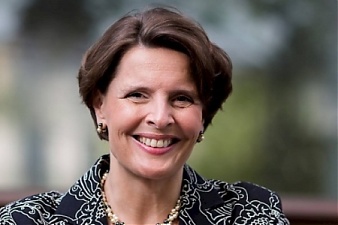Analytics, Direct Speech, EU – Baltic States, Legislation, Markets and Companies
International Internet Magazine. Baltic States news & analytics
Sunday, 28.12.2025, 15:31
New opportunities and trends in Nordic cooperation
 Print version
Print version |
|---|
Nordic
cooperation dates back to regular ministerial meetings held already in the
1930s. In 1971 the cooperation was formalised as the ’Nordic Council of
Ministers’ (NCM), which was established under amendments to a 1962 Nordic
treaty. The Nordic countries were at the time proceeding well ahead of the EEC
in terms of border-free travel, a common labour market and shared social
security. Cooperation between our closely connected societies survived the cold
war well, despite the divisive security environment. For example, the world’s
first fully automatic mobile phone system NMT, with Nordic roaming, was created
in 1981. Sweden and Finland joined Denmark as full members of the EU in 1995. A
declaration on Nordic cooperation was included in the accession treaties but no
exceptions to European law were agreed upon. The Schengen area was extended to
include Norway and Iceland so that the existing Nordic freedom of movement
would not be restricted. Other efforts to adapt Nordic cooperation to the new
circumstances were partly successful.
These
measures, however, could not prevent the trend by which Nordic cooperation was
losing political relevance. There was a move away from ‘high politics’ towards
policy research, experience-sharing and financing programmes. A very important
niche was seized by extending such programmes and policy dialogue to the three
Baltic States. In 2005, these countries also became members of the Nordic
Investment Bank. I took on the responsibilities of minister in charge of Nordic
cooperation in mid-2015.
At that
point, with international affairs deteriorating, there was a perception that
consecutive financial and political crises were tearing the EU apart from
within. On the eve of Finland’s turn to assume the rotating presidency of the
NCM in 2016 an extraordinary influx of asylum seekers stirred up European
politics and this led to challenges to the Schengen agreement, subsequently
causing some restrictions to free movement across Nordic borders. We found
ourselves in the midst of public sentiment that materialised as more demand for
stronger Nordic collaboration. At the meantime, the enlarged EU had become more
diverse and less wary of constructive like-minded groups and sub-regional
solutions. For instance, the common Nordic electricity market is recognised as
a future building block for the EU Energy Union.
Under such
circumstances, the NCM launched a reform effort that was prepared during
Finland’s Presidency. The reform was aimed at improving the response to current
political challenges and at making Nordic cooperation more relevant — be it for
citizens, businesses or political leaders. As a result, some new flexibility
was introduced into working methods, the institutional structure and budgeting.
In response to the political agenda, a programme for integrating immigrants and
refugees started in 2016, and it has been successful in sharing best practices.
Further reform may be needed in the future. In autumn 2016, the prime ministers
of the Nordic countries declared the Nordic countries the world’s most
integrated region. Existing and new endeavours to improve the conditions for
mobility, cross-border solutions and common standards are being promoted on
many fronts, in conformity with EU-efforts. The ministers for Nordic cooperation
commissioned an important report on legislative cooperation, which was
delivered to us in February. In the coming months, its recommendations will be
studied in different quarters in all Nordic countries. The programme for
Sweden’s Presidency of the NCM in 2018 stresses the importance of the Baltic
countries and the synergies with the regional councils and forums. The themes
for the presidency are inclusion, innovation and security, with digitalisation
as a recurrent theme throughout the programme.
In 2017 an
ad hoc council of ministers for digitalisation, MR-Digital, was mandated for a
three-year term, and Estonia, Latvia and Lithuania were invited to participate.
Prioritised spearhead projects include electronic identification, 5G,
e-Procurement, and cross-border platforms and services. The Nordic–Baltic
region is a digital pioneer and it offers significant potential for advanced
cross-border solutions and business platforms. Cross-border travel, transport
and communications are areas with great potential. The challenging conditions
of the Arctic also call for specialised solutions, where joint Nordic ventures
could deliver.








 «The Baltic Course» Is Sold and Stays in Business!
«The Baltic Course» Is Sold and Stays in Business!

